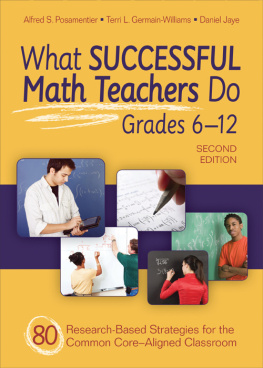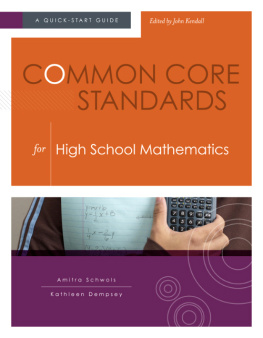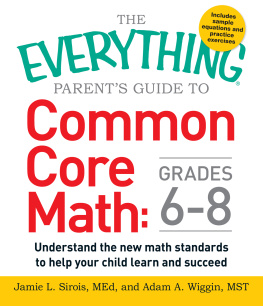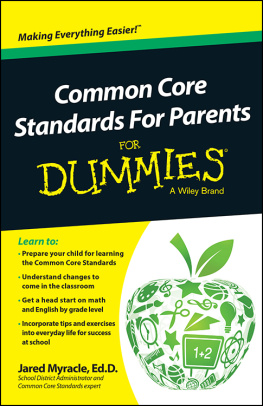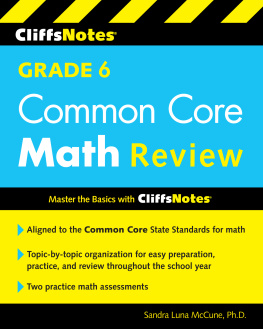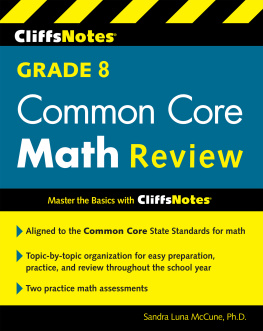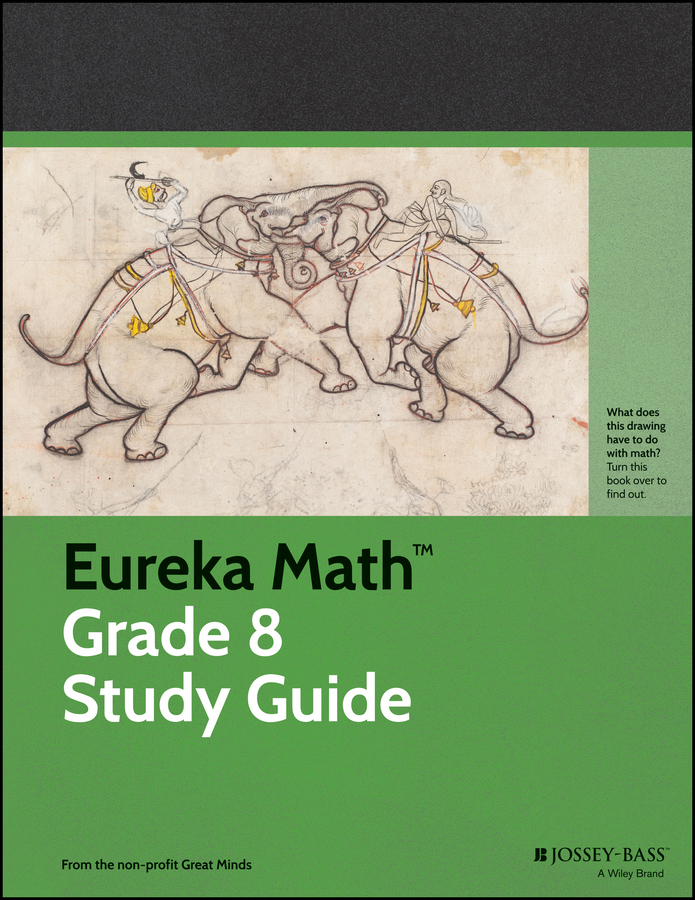
Table of Contents
List of Illustrations
- Chapter 02
- Chapter 04
Guide
Pages
Other Books
WHEATLEY PORTFOLIO
- English, Grades K5, Second Edition
- English, Grades 68, Second Edition
- English, Grades 912, Second Edition
ALEXANDRIA PLAN
- United States History, Grades K2
- World History, Grades K2
- United States History, Grades 35
- World History, Grades 35
EUREKA MATH
- Eureka Math Grade K Study Guide
- Eureka Math Grade 1 Study Guide
- Eureka Math Grade 2 Study Guide
- Eureka Math Grade 3 Study Guide
- Eureka Math Grade 4 Study Guide
- Eureka Math Grade 5 Study Guide
- Eureka Math Grade 6 Study Guide
- Eureka Math Grade 7 Study Guide
Eureka Math Grade 8 Study Guide
Cover design by Chris Clary
An Elephant Fight (Recto) and Vasudeva Rescues Baby Krishna (Verso). India, Rajasthan, Kota circa 18001825. Ink and opaque watercolor on paper. Donated by Paul F. Walter to the Los Angeles County Museum of Art (LACMA) South and Southeast Asian Art Collection. Digital Image 2016 Museum Associates/LACMA. Licensed by Art Resource, NY.
Copyright 2016 by Great Minds. All rights reserved.
Published by Jossey-Bass
A Wiley Brand
One Montgomery Street, Suite 1000, San Francisco, CA 94104-4594www.josseybass.com
No part of this publication may be reproduced, stored in a retrieval system, or transmitted in any form or by any means, electronic, mechanical, photocopying, recording, scanning, or otherwise, except as permitted under Section 107 or 108 of the 1976 United States Copyright Act, without either the prior written permission of the publisher, or authorization through payment of the appropriate per-copy fee to the Copyright Clearance Center, Inc., 222 Rosewood Drive, Danvers, MA 01923, 978-750-8400, fax 978-646-8600, or on the Web at www.copyright.com. Requests to the publisher for permission should be addressed to the Permissions Department, John Wiley & Sons, Inc., 111 River Street, Hoboken, NJ 07030, 201-748-6011, fax 201-748-6008, or online at www.wiley.com/go/permissions.
Limit of Liability/Disclaimer of Warranty: While the publisher and author have used their best efforts in preparing this book, they make no representations or warranties with respect to the accuracy or completeness of the contents of this book and specifically disclaim any implied warranties of merchantability or fitness for a particular purpose. No warranty may be created or extended by sales representatives or written sales materials. The advice and strategies contained herein may not be suitable for your situation. You should consult with a professional where appropriate. Neither the publisher nor author shall be liable for any loss of profit or any other commercial damages, including but not limited to special, incidental, consequential, or other damages. Readers should be aware that Internet Web sites offered as citations and/or sources for further information may have changed or disappeared between the time this was written and when it is read.
Jossey-Bass books and products are available through most bookstores. To contact Jossey-Bass directly, call our Customer Care Department within the U.S. at 800-956-7739, outside the U.S. at 317-572-3986, or fax 317-572-4002.
For more information about Eureka Math, visit www.eureka-math.org.
Wiley publishes in a variety of print and electronic formats and by print-on-demand. Some material included with standard print versions of this book may not be included in e-books or in print-on-demand. If this book refers to media such as a CD or DVD that is not included in the version you purchased, you may download this material at http://booksupport.wiley.com. For more information about Wiley products, visit www.wiley.com.
Library of Congress Cataloging-in-Publication Data has been applied for and is on file with the Library of Congress.
ISBN 978-1-118-81185-6 (paper); ISBN 978-1-119-26087-5 (ebk.); ISBN 978-1-119-26088-2 (ebk.)
Introduction
When do you know you really understand something? One test is to see if you can explain it to someone elsewell enough that they understand it. Eureka Math routinely requires students to turn and talk and explain the math they learned to their peers.
That is because the goal of Eureka Math (which you may know as the EngageNY math modules) is to produce students who are not merely literate, but fluent, in mathematics. By fluent, we mean not just knowing what process to use when solving a problem but understanding why that process works.
Heres an example. A student who is fluent in mathematics can do far more than just name, recite, and apply the Pythagorean theorem to problems. She can explain why a2 + b2 = c2 is true. She not only knows that the theorem can be used to find the length of a right triangles hypotenuse but also can apply it more broadlysuch as to find the distance between any two points in the coordinate plane, for example. She also can see the theorem as the glue joining seemingly disparate ideas including equations of circles, trigonometry, and vectors.
By contrast, the student who has merely memorized the Pythagorean theorem does not know why it works and can do little more than just solve right triangle problems by rote. The theorem is an abstractionnot a piece of knowledge, but just a process to use in the limited ways that she has been directed. For her, studying mathematics is a chore, a mere memorizing of disconnected processes.
Eureka Math provides much more. It offers students math knowledge that will serve them well beyond any test. This fundamental knowledge not only makes wise citizens and competent consumers but also gives birth to budding physicists and engineers. Knowing math deeply opens vistas of opportunity.
Students become fluent in mathas they do in any other subjectby following a course of study that builds their knowledge of the subject, logically and thoroughly. In Eureka Math, concepts flow logically from PreKindergarten through high school. The chapters in the story of mathematics are A Story of Units for the elementary grades, followed by A Story of Ratios in middle school, and A Story of Functions in high school.
This sequencing is joined with a mix of new and old methods of instruction that are proven to work. For example, we utilize an exercise called a sprint to develop students fluency with standard algorithms (routines for adding, subtracting, multiplying, and dividing whole numbers and fractions). We employ many familiar models and tools such as the number line and tape diagrams (aka bar models). A newer model highlighted in the curriculum is the number bond (illustrated on the following page), which clearly shows how numbers are composed of other numbers.
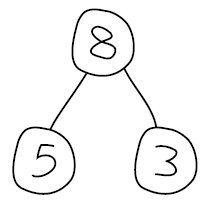
Eureka Math is designed to help accommodate different types of classrooms and to serve as a resource for educators, who make decisions based on the needs of students. The vignettes of teacher-student interactions included in the curriculum are not scripts, but exemplars illustrating methods of instruction recommended by the teachers who have crafted our curriculum.
Next page

